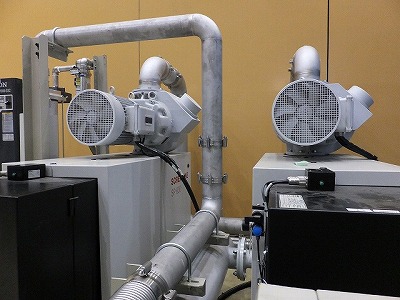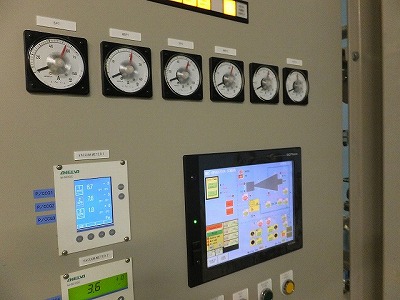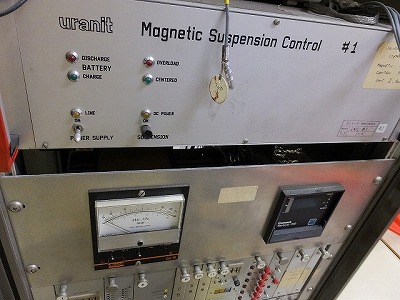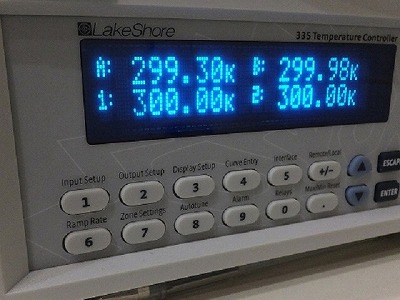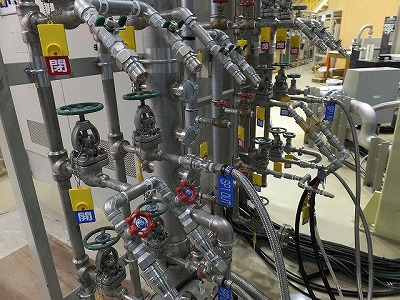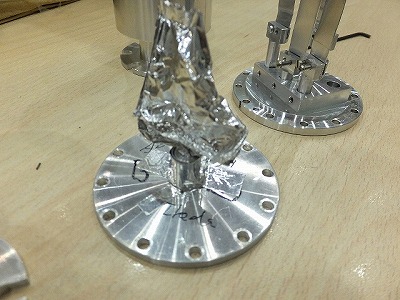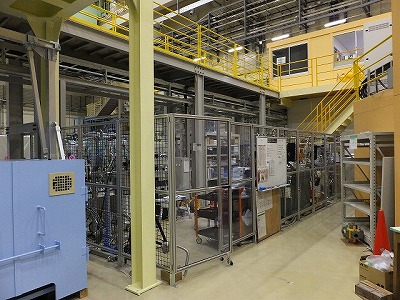Materials Structure Science Program > Neutron / Muon > Quantum materials group
Quantum materials group
Probe materials dynamics with a neutron beam
Neutron scattering is a very powerful tool in the research of condensed matter physics. By irradiating a substance with a neutron beam and observing the scattered neutrons, we can learn about the static states of nuclei and the spins in the substance (e.g., crystal structures and magnetic structures) and about the dynamic behavior in the substance (e.g., spatial distribution of momentum and the energy of phonons and magnons). This is because a neutron's mass is similar to that of a proton, a neutron has no electric charge, and a neutron has a spin of 1/2. The Quantum Materials Group placed the High Resolution Chopper Spectrometer (HRC) at the Materials and Life Science Experimental Facility in J-PARC to perform research on the dynamics of matter.
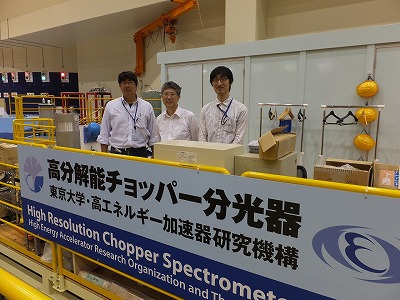 Group members
Group members
● Main research projects
Physics of quantum spin systems
A quantum spin system is a localized spin system with strong quantum effects. In this system, the ground state is not necessarily apparent because quantum fluctuation, frustration, and magnetic anisotropy compete with each other. To elucidate the ground state and the interaction between the spins, we observe the magnetic excitation in a quantum spin system over a broad momentum and energy space using HRC. The right figure shows the excitation spectrum of the one-dimensional antiferromagnet CsVCl3 observed with HRC. Near q = 1 Å-1, there is a clear signal that extends to the high-energy side. From this signal, we can see how the spin wave propagates in CsVCl3.
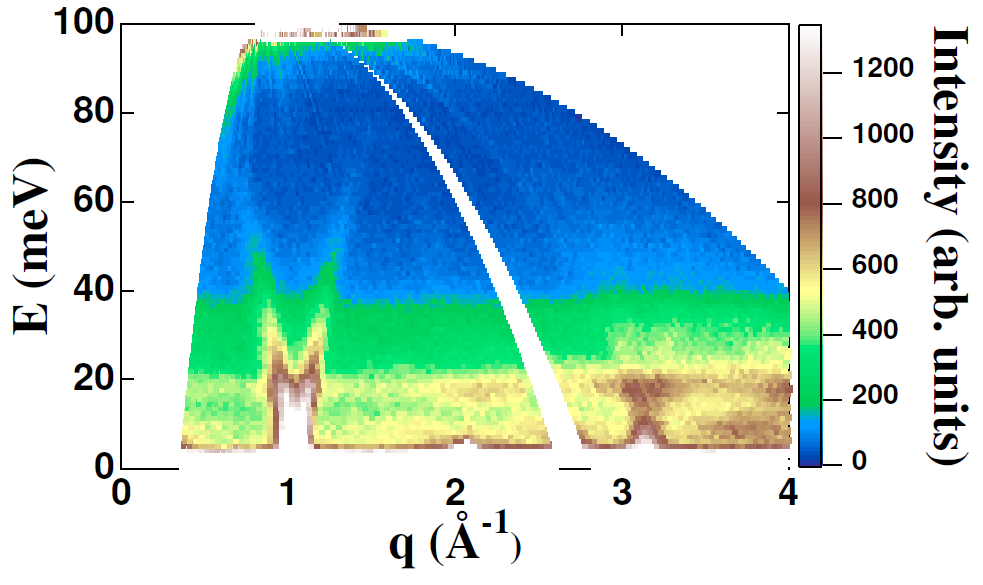 Excitation spectrum of the one-dimensional antiferromagnet CsVCl3 observed using HRC [Phys. Soc. Jpn. 82 (2013) SA033]. 82 (2013) SA033).
Excitation spectrum of the one-dimensional antiferromagnet CsVCl3 observed using HRC [Phys. Soc. Jpn. 82 (2013) SA033]. 82 (2013) SA033).
Magnetic excitation of itinerant antiferromagnetic metals
Chromium metal and iron manganese alloy, which are itinerant antiferromagnets, have simple crystal structures; however, surprisingly, their magnetic excitations have not been completely revealed, even though they have been studied for several decades. The magnetic order in these substances is believed to originate from the nesting of the electron Fermi surface and the hall Fermi surface. The characteristics of the magnetic order are different from those of the magnetic order in localized spin systems. We are studying high-energy magnetic excitation (~102 meV) using HRC.
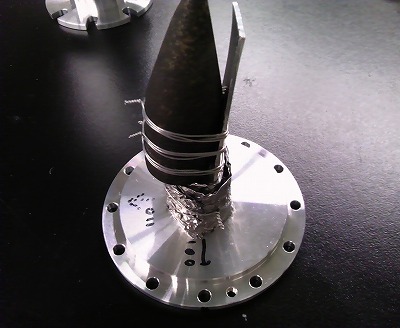 Single crystal of iron manganese; the direction is aligned on a sample holder.
Single crystal of iron manganese; the direction is aligned on a sample holder.
Magnetic excitations of high-temperature superconductors
Copper oxide superconductors and iron-based superconductors exhibit their superconductivity at relatively high temperatures. The mechanism of the superconductivity has not been resolved as of yet, but it is likely that magnetic fluctuations play some role. We are observing magnetic fluctuations in compositions of the superconductors and materials with similar composition to them in detail with the hope of detecting their characteristics.
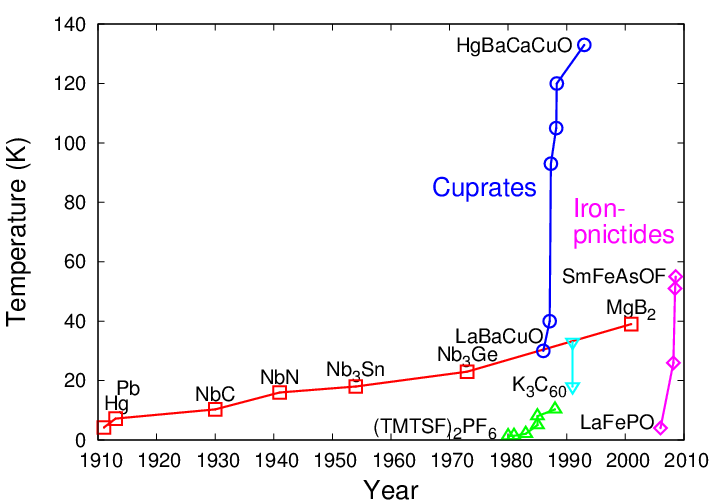
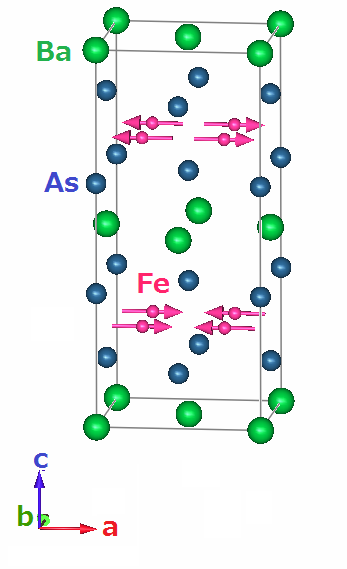
Magnetic structure of the parent compound of the iron-based superconductor BaFe2As2 (right).
● Research environment
As mentioned above, neutron scattering is a powerful experimental tool; however, there are few high-intensity-neutron facilities that use large accelerators. Fortunately, our Quantum Materials Group works at a facility where such a rare device is available for research. In addition, we have many opportunities to interact with research staff from other universities with which we collaborate, and with people who are conducting cutting-edge research all over Japan and overseas with whom we can collaborate. We are fortunate to work in an open and stimulating research environment. In addition, in 2014, we began building a new polarized neutron spectrometer, POLANO, and have the rare opportunity to see the building process up close.
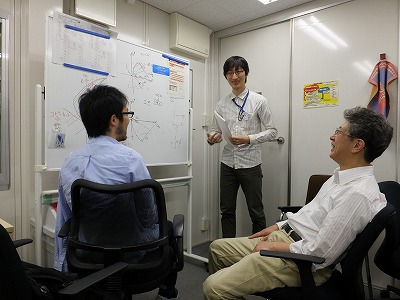
Members
| Name | Position | Field |
|---|---|---|
| ITOH, Shinichi | Professor | Condensed matter physics |
| YOKOO, Tetsuya | Professor | Condensed matter physics |
| UEDA, Daichi | Postdoctoral fellow |
[Experimental apparatus]
High Resolution Chopper Spectrometer (HRC)
Polarized Neutron Spectrometer (POLANO)
● Links
Neutron Science Division, Institute of Materials Structure Science https://www2.kek.jp/imss/kens/eng/

